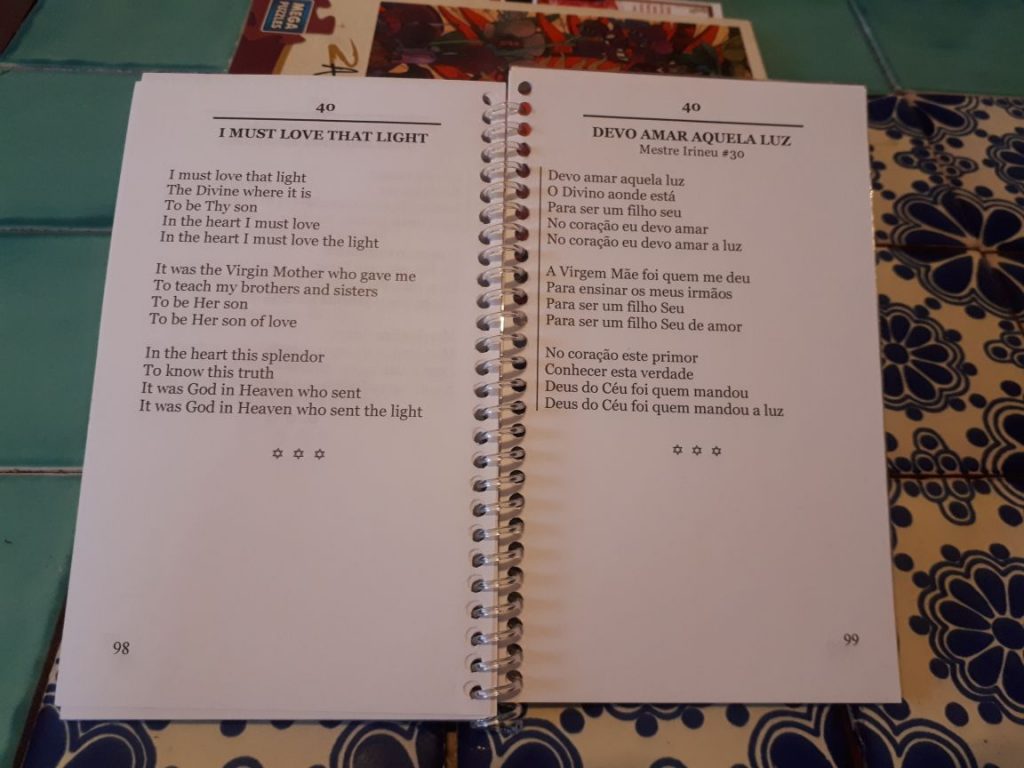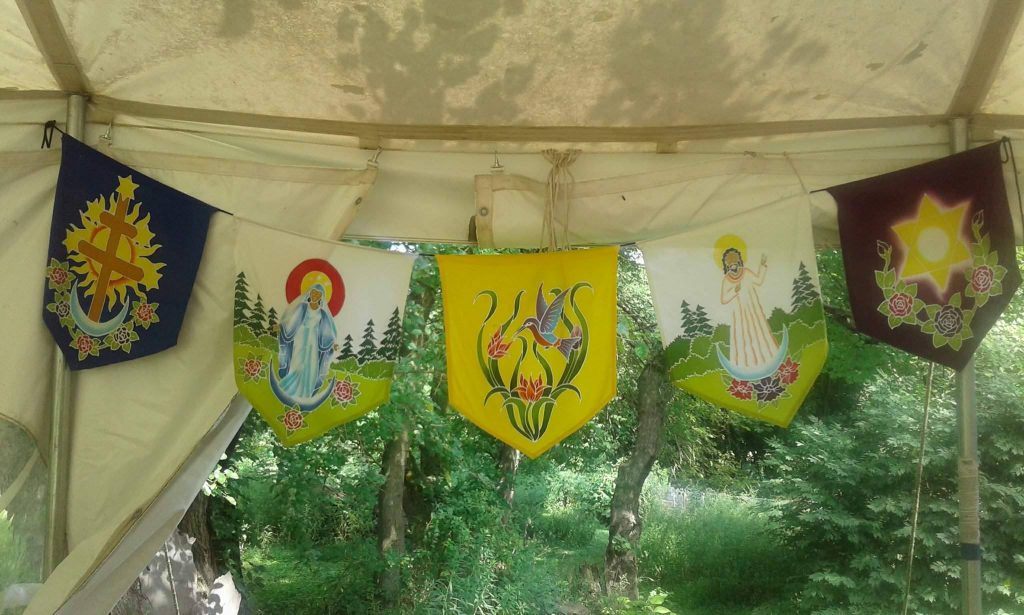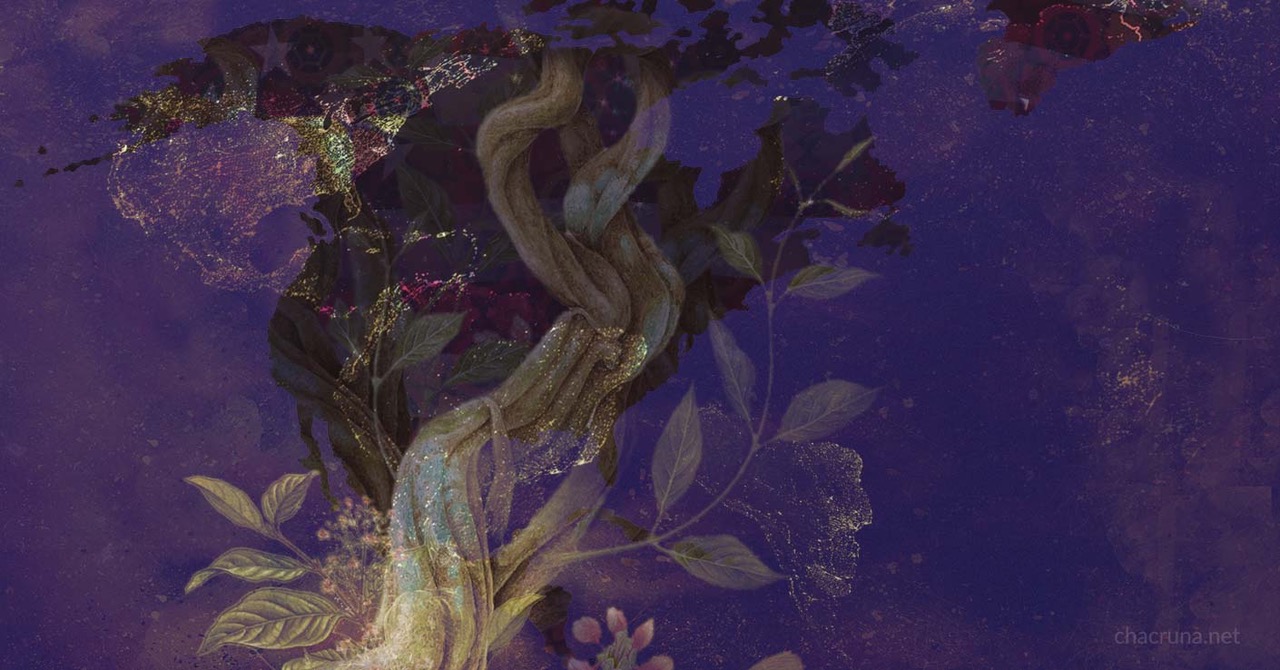- My Experience as a Brazilian at a Santo Daime Retreat in the United States - October 16, 2017
It was 2016 when I got the news: I was going to the United States in 2017 to do part of my doctoral studies at the University of Florida (UF). Being able to study abroad was a dream come true. I have to say, though, that the US was never on my list of countries in which to study, live, or even visit. As a leftist Brazilian sociologist, I had grown distrustful and even angry towards the country’s politics and culture. The choice to go to UF was made because of the opportunities that opened up to me during the period I was searching for a place to study.
One of those opportunities was to do field work in Santo Daime’s churches there, which turned out to be a great experience for me as a researcher, and also as a fardada (an official devotee) myself. As a sociologist, I had the opportunity to see the shapes and colors of Santo Daime in the US, and compare them with the ones I was familiar with in Brazil. As a fardada, going to a US church and participating in its rituals ended up being an essential step in order to better cope with my “foreigner experience”; the name I gave for what I was feeling in my early days in the United States.
This feeling was of course marked by the experience of living in the place I had for so long been critical of, but it was also created by a feeling of seeing myself as a toddler, given that I didn’t yet know the codes to get the things I wanted. For example, I didn’t understand how basic things, such as grocery shopping and cleaning the house, worked. Even though my English was fairly good, I also had trouble connecting with people.
In the middle of those everyday challenges, my work at UF had already started, and my fieldwork needed to start soon, which meant I needed to adapt quickly to this exotic environment. This need led me to my first travel to a Santo Daime church, about 20 days after my arrival. Though 20 days may seem to be enough time for grounding, that wasn’t my experience at all, making the experience work more as a deep healing personal process than a sociological experience.
A month after that, I went to a four-day retreat up North, guided by Jonathan Goldman and his family, leaders from the Church of the Holy Light of the Queen in Oregon (CHLQ). I contacted him knowing he had been in touch with the leader of the Brazilian church with which I am associated.
This previous connection was why, when Jonathan invited me to participate in the retreat, he explained to me that the ceremonies were different from the ones I was used to. He, his wife Jane, and the person responsible for the space where the rituals would take place, were remarkably sweet to me. Their effort to help me get there was crucial to my participation, since I was still unsure of my courage and capacity to endure such distant and extended travel.
The space where the rituals took place was a tent on a cozy and charming farm, surrounded by cornfields and apple trees. During the retreat, some others and I were accommodated on the farm in camping spaces or in bedrooms. Over those days, the intimacy between me and the people staying there grew stronger, slowly dissolving my fears and anxieties about being in a different and distant land, and also far from the cocoon I had created back in Florida: I was connecting with them. Many bridges made this connection possible; the most important one was that they were kind and welcoming.
On the first day, I heard a woman who was staying with us on the farm say, “It’s like a family reunion.” My religious experience in Brazil also consisted of the feeling of being in an extended family created by the union of all the people in the church. As with them, we would share meals, laughs, tenderness, and the idea of a spiritual mission. During the retreat, they were inviting me to also be part of their family.
Other bridges helped me not only to integrate with the group, but also to understand and better participate in the rituals, which were done in a format that was unusual to me. The retreat was based on three days of “Santo Daime Self-Transformation Work1” and one day of trabalho de hinário (hymnal work, in a literal translation), the only one I was already used to doing.
The Self Transformation Work is a 20 year-old ritual still in development by Jonathan and his family, deeply marked by their connection with their Santo Daime godmother Baixinha, their dear friends Alex Polari and Sonia Palhares, who are important leaders in the expansion of the Santo Daime, and also to the ICEFLU’s leader Alfredo Gregório de Melo.
These rituals have indeed, as Jonathan told me via email, a very different form from what I am used to, but by following his directions during the ceremonies, the movement of those around me, and the guidance from Daime itself and my experience as a fardada, I could create bridges of understanding that led me to integrate the rituals. Being a Daimista was itself a bridge. Though the format was different, its root was the same one I already knew in my heart.
It’s interesting to note that, just as I did, the sacramental beverage we drunk during the retreat traveled from Daime churches in Brazil to the US, along with the doctrinal hymnals of Brazilian leaders and devotees sung in my native language, Portuguese. It was home, but abroad.
Though this may create an impression of an easy flowing process, the rituals actually developed from a very bad first day, which was only overcome through an active process of informing my experience by crossing as many bridges as I could find. Those crossings also helped me to dissolve personal judgments that developed from my experience of a very different way of doing Daime works, and from my hard time connecting with the US and its people.
All the effort combined culminated in both a deep feeling of integration, and in an extremely happy last day on the retreat. I felt that I wasn’t the only one crossing bridges though: they were also doing that as devotees of a foreign religion. I understood that Jonathan and his family are creating a bridge by doing something like translation work; not in the strict sense of translating hymns and prayers to English, but by translating the whole doctrine from a Brazilian scenario to an Anglophone one.

On the last day, I entered the church structure feeling like I was going to my own church in the Brazilian state of Minas Gerais; my heart filled with warmth. I felt like I had a heart-to-heart connection with everyone. For the first time in a long time, I was no longer lonely. I had found, then, brothers and sisters in the United States: a foreign people who have been touched by Santo Daime and were experiencing deep self-transformation and healing. Every time the hymn that says “Thanks to God for where I am, there’s Daime”— from the hinário of godmother Maria Brilhante — was sung, my eyes would cloud over with emotion and happiness for Santo Daime’s expansion, and also for the possibility of me being in a ritual so far away from home.
The expansionary movement of Santo Daime and other ayahuasca traditions through the five continents is a reality, even though it faces legal challenges in many countries, making the work of different groups, like ICEERS, dedicated to legal support for ayahuasca expansion, really important. I have a deep belief in the profound benefits of this expansion movement. I am myself a devotee from Santo Daime’s regional expansion from the Amazon forest to the Brazilian Southeast.
To finish the post, I recount a special moment during the retreat when, while walking up to a group of people, a woman said: “So, you are the foreigner,” which was followed by the words “She is one of ours now,” by a man with a beautiful smile and a strong North Carolina accent. Then I knew I wasn’t alone in US anymore, and became certain about the real possibility—and benefits—of a wide global expansion. The final bridge had been crossed.

- “Work” is the literal translation of “trabalho,” used as a synonym for ceremony or ritual. ↩
Take a minute to browse our stock:
Did you enjoy reading this article?
Please support Chacruna's work by donating to us. We are an independent organization and we offer free education and advocacy for psychedelic plant medicines. We are a team of dedicated volunteers!
Can you help Chacruna advance cultural understanding around these substances?










